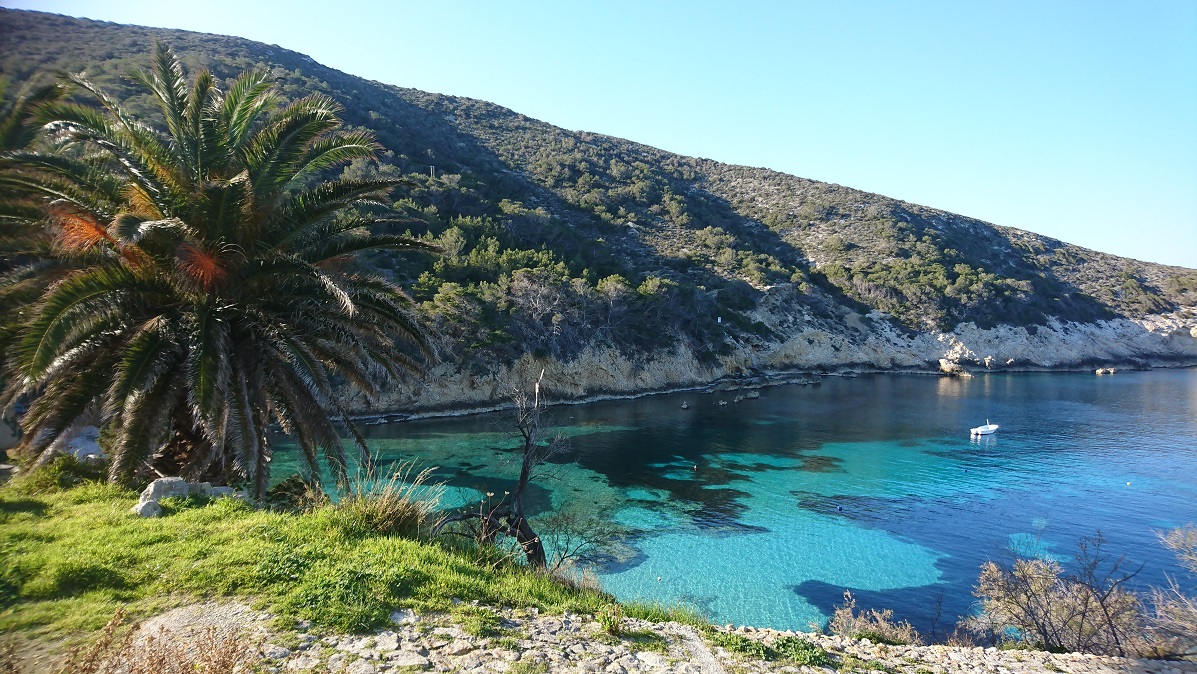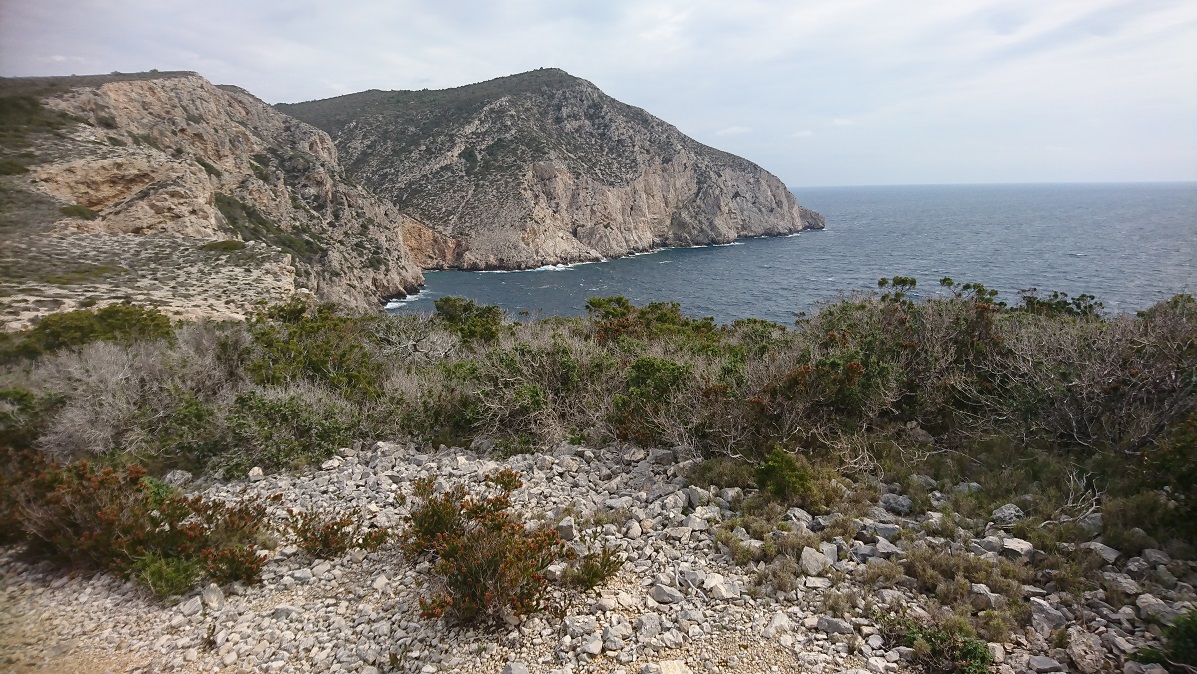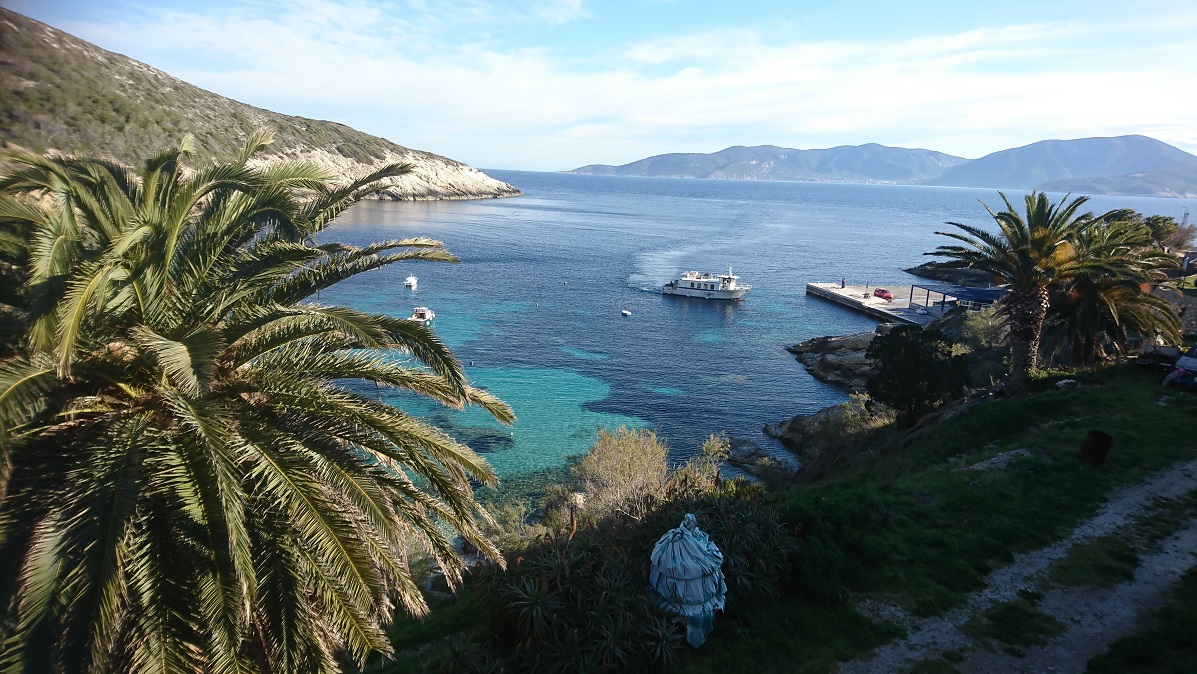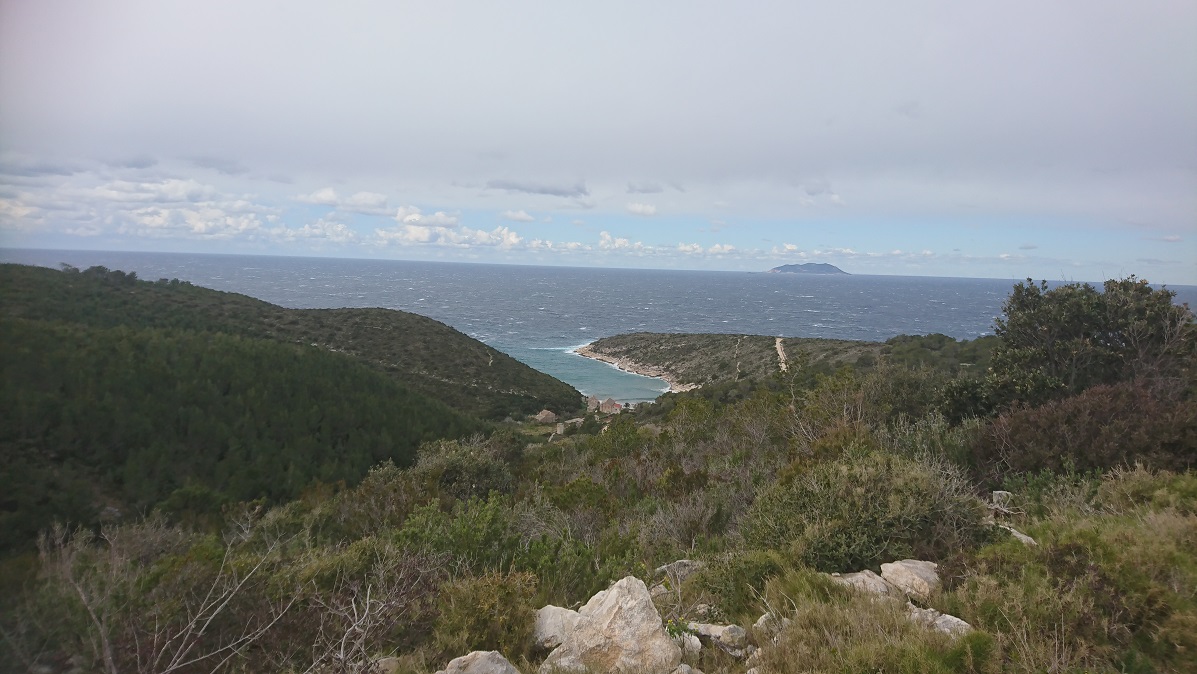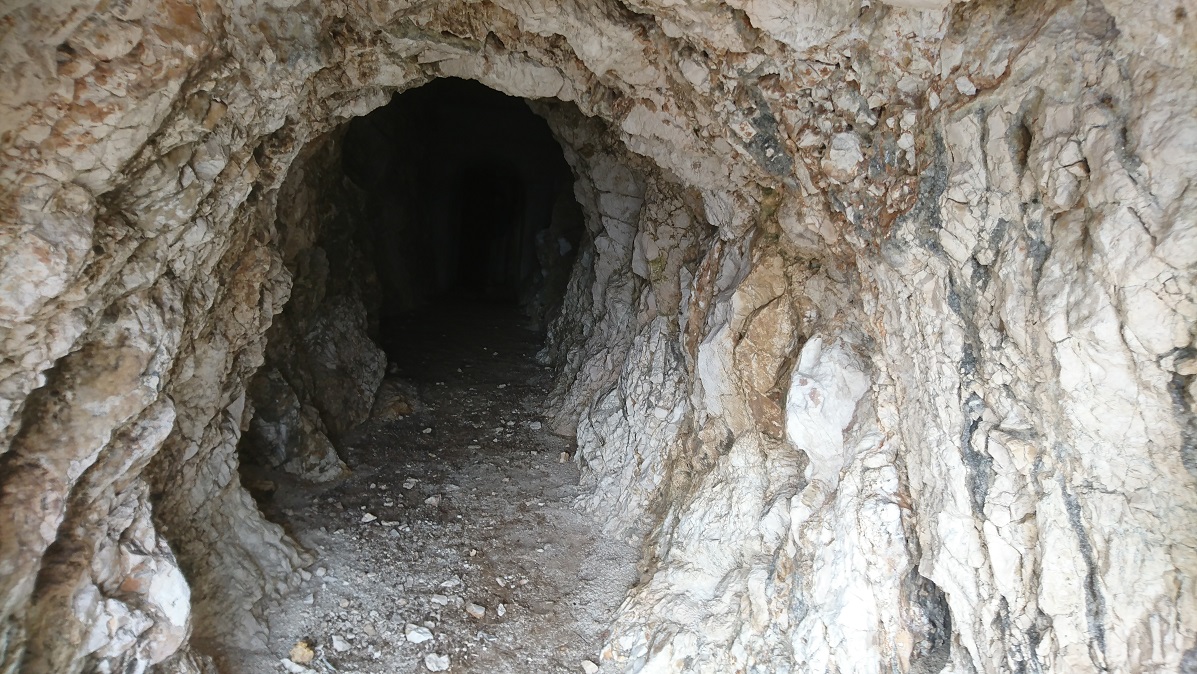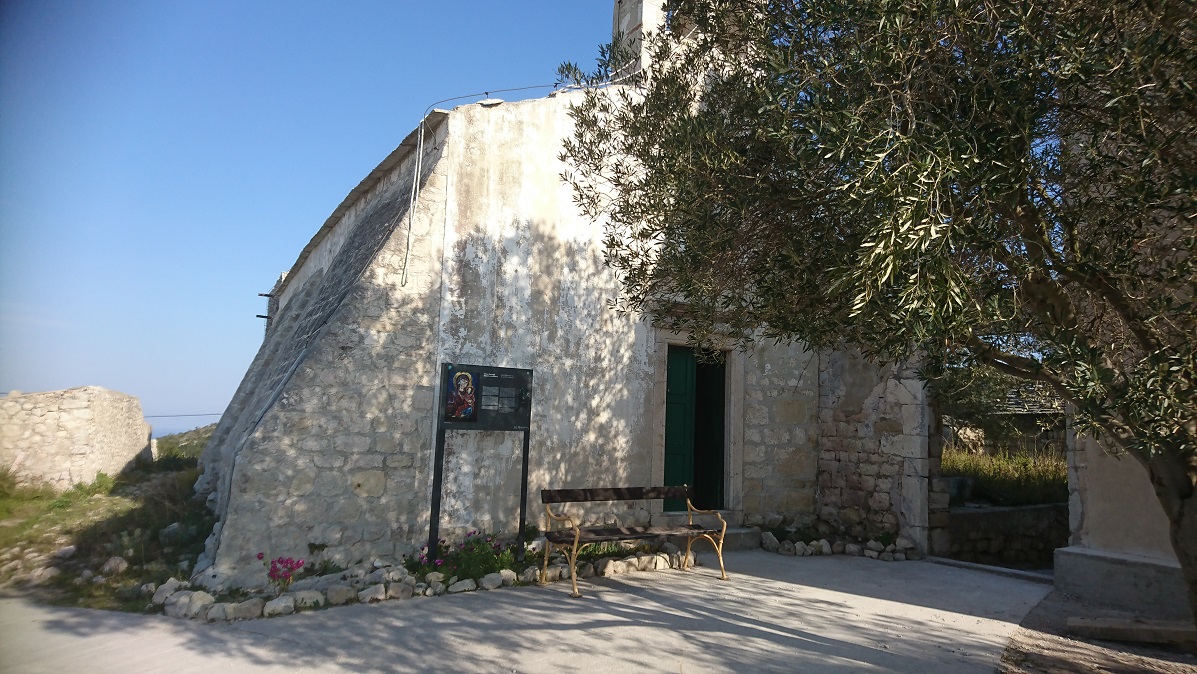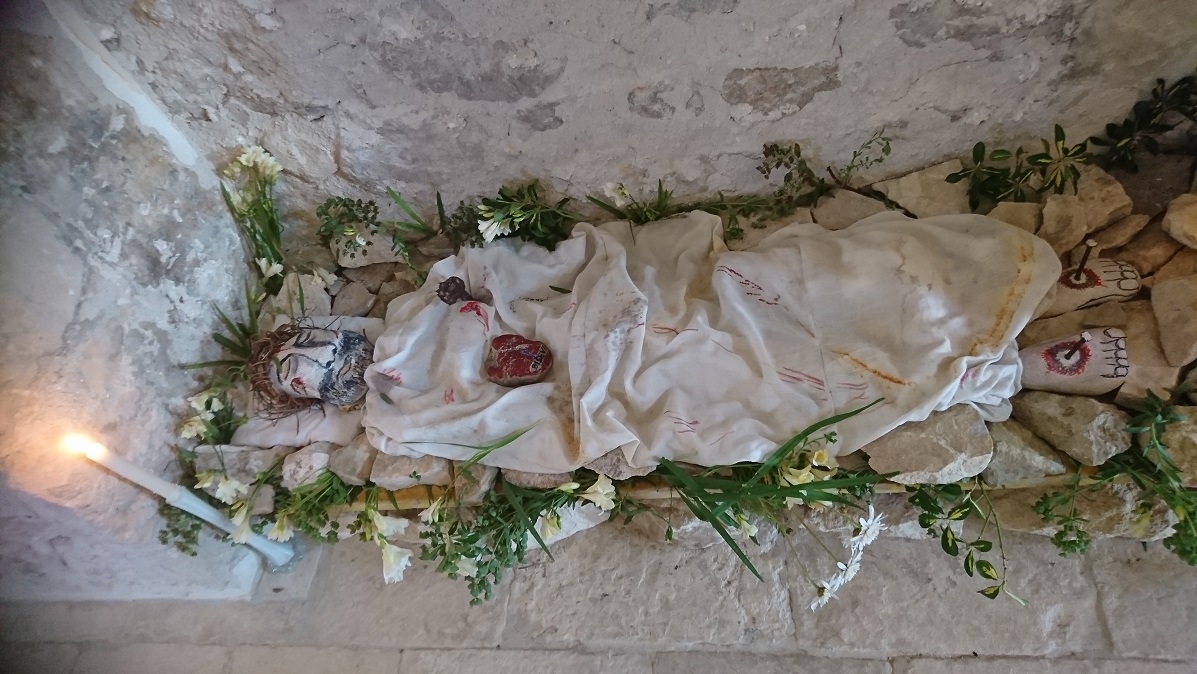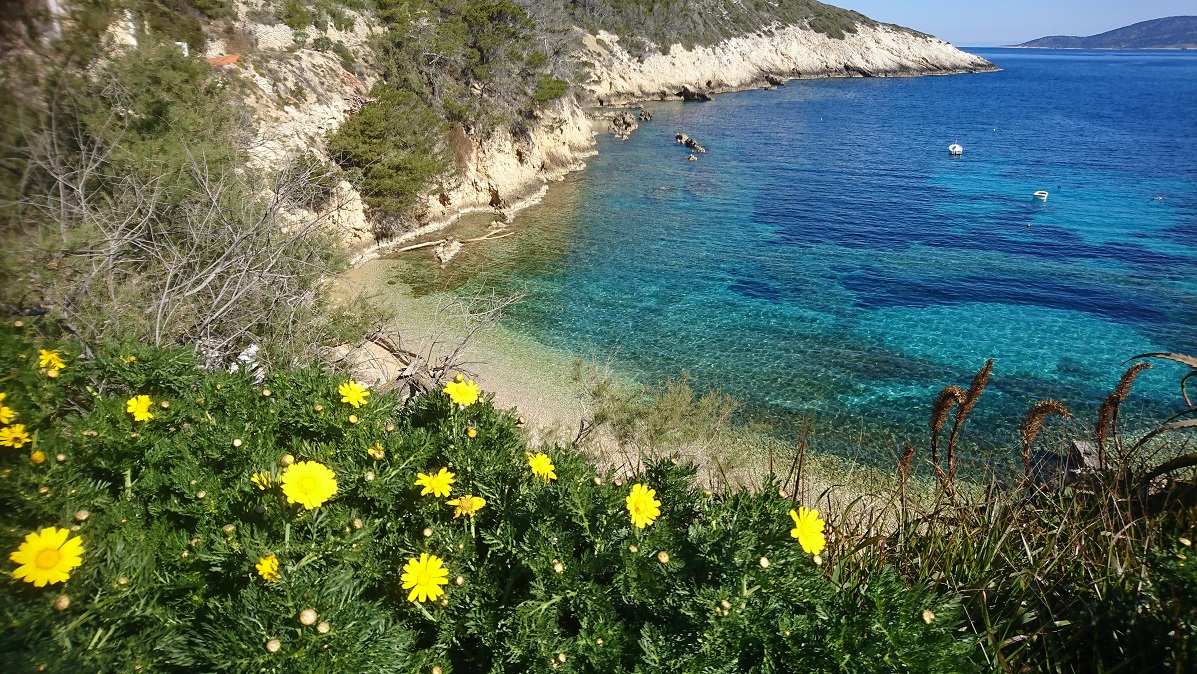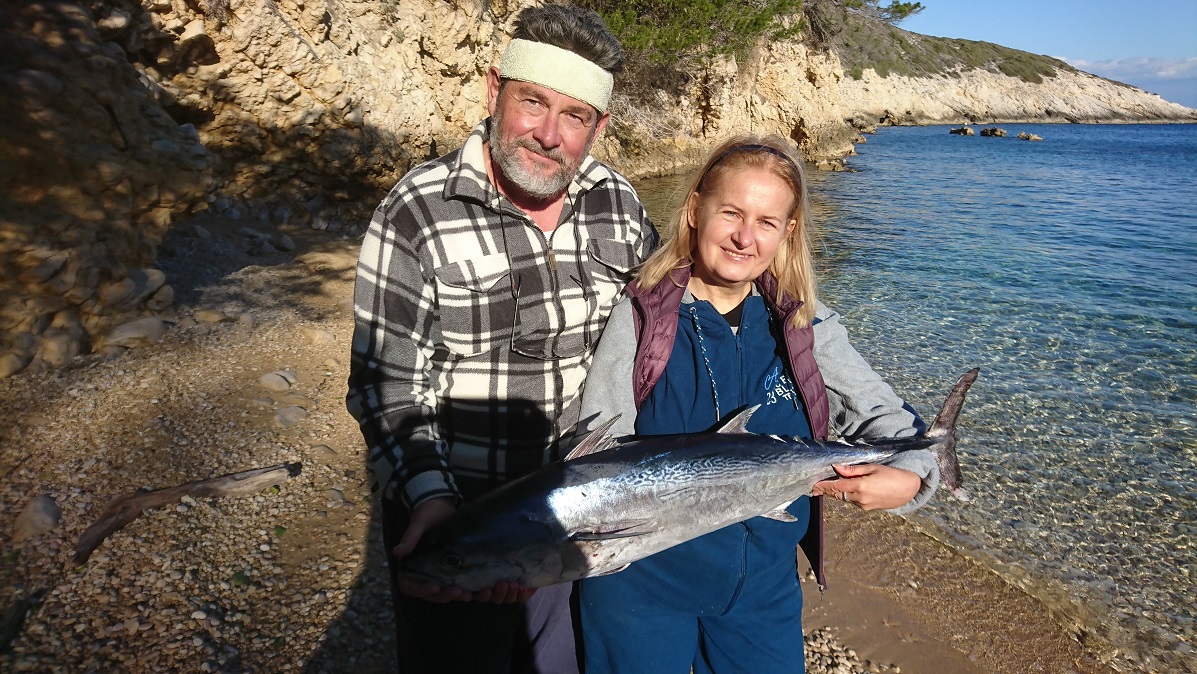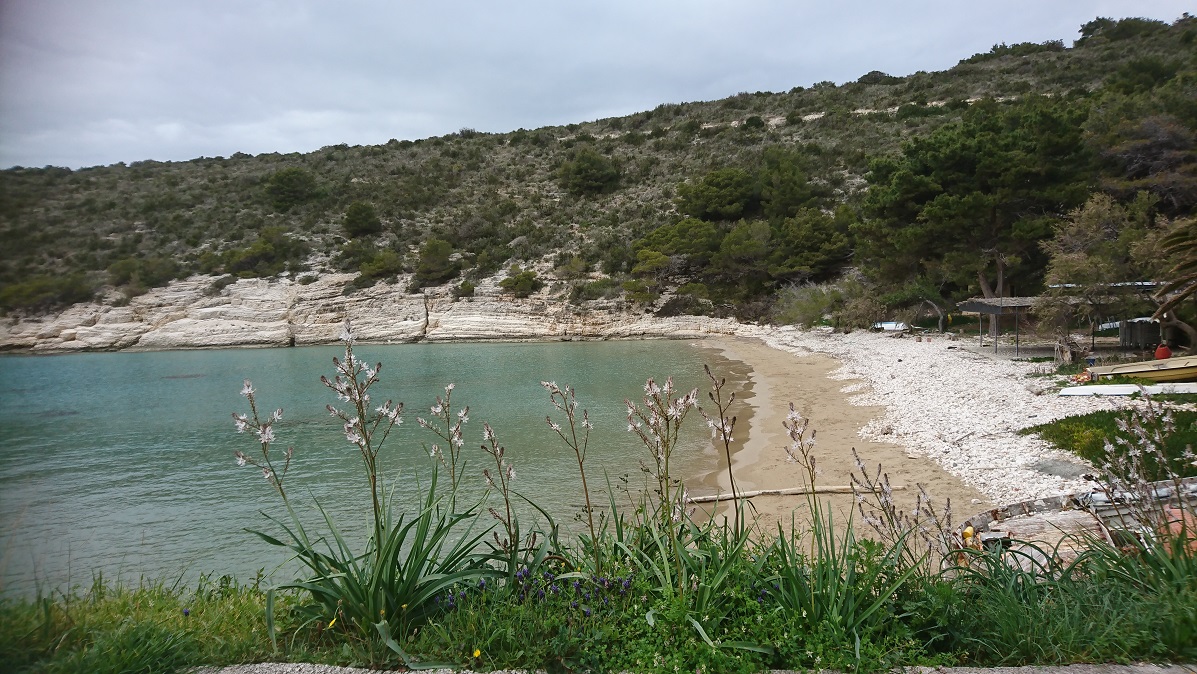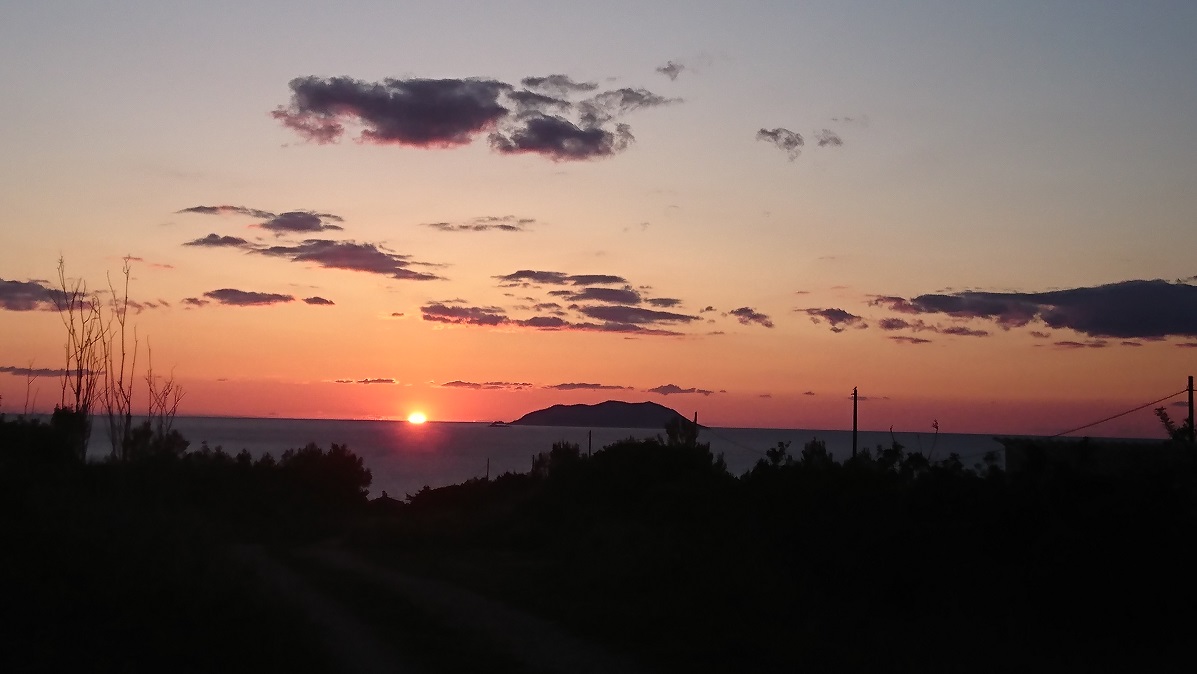Maritime Welfare in Croatia: Drvenik Case and What Law Says
June 25, 2021 - The issue of maritime welfare in Croatia was raised once again after a heated discussion on a beach in Drvenik Veli. Here are the details of the case and legal guidance to the maritime welfare in Croatia.
With the 2021 tourist season already being 58% better than 2020, tourists once again visit Croatia as one of the top holiday destinations.
However, like any year, the season can't go without at least some sort of incident.
Lovely beach, disgusting words
Yesterday, Croatia was shocked and enraged with the incident that happened on a beach on Drvenik Veli island (not so far from Trogir). Croatian journalist Tonka Alujević and her friend went to a beach where two Czech tourists started complaining that it's a private beach, perks of paying for a villa, and that Alujević needs to leave. Alujević refused to leave, stating that beaches are maritime welfare and cannot be privatized, refusing to move. After, as Alujević claims Czech tourists hit her head with a phone, they called the villa owner. 24 Sata daily newspaper published a video Alujević's friend recorded.
„Ma'ams, Ma'ams, how did you get here? On foot?“, asked the owner on a phone that was on speaker and held by the Czech tourists.
„I'm a journalist. Do you know Croatian laws? Do you want to end up in media?“ replied Alujević with a chill face while smoking a cigarette on a sunny day at the beach.
„Come on, put me in the media, come on put me! But first, go to the land register and see that my beach is private," screamed the owner in Croatian, with a lot of derogatory phrases (if only Czech tourists had a translator to understand the rich swear word heritage of Croatian language, right?)
The whole thing ended up with inspection stepping on the scene. Despite the video footage being clear, the owner, identified by Index.hr as Tomislav Meštrović, owner of Centovi Dvori Villa, tried to justify himself, saying everyone is welcomed at the beach, and he attacked the women because they passed through his doorway.
„No, I have no idea what video, who what... who knows what that is... I called the police for trespassing through my land“, said Meštrović to Index.hr when asked about the footage.
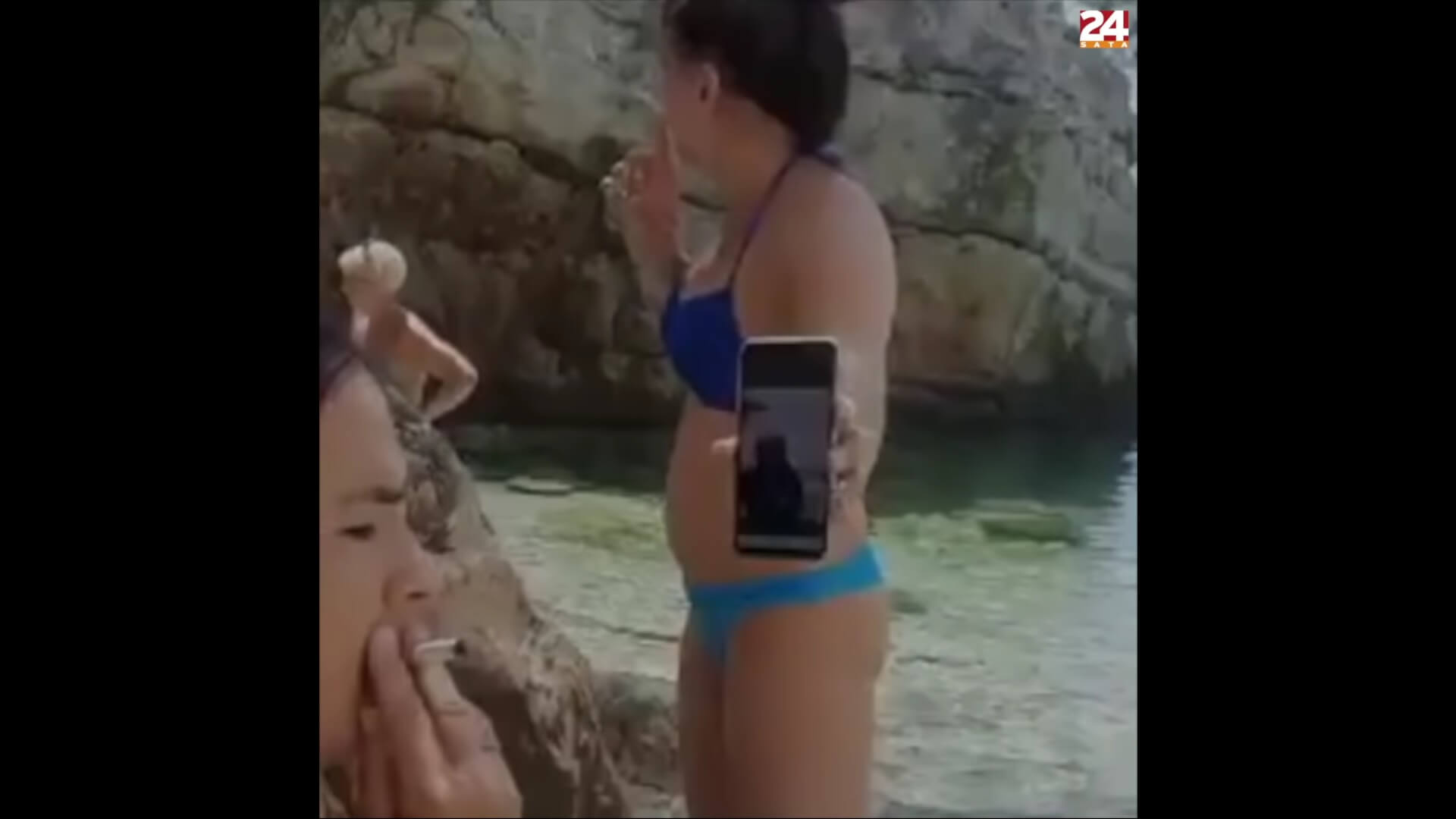
the conversation at the beach, screenshot/ 24sata
Law and order
Following this story, Index.hr's columnist Goran Vojković analyzed the law to clear up the issue of maritime welfare.
„The Maritime Welfare and Sea Ports Law states 'at least six meters from a line horizontally distant from the line middle waters'. But it can be wider, for example, if part of the land that in its nature or use serves to exploit the sea. It can also be narrowed- for instance, if support walls or a public road are close to the sea“, Vojković listed general rules but adding that maritime welfare border is specifically determined.
„So, the coast is free to use where the beach is, in general, six meters. You can come and use it for your needs, such as bathing, tanning, or walking. The land behind can be private, but the coast cannot“, concluded Vojković.
On the other hand, there are ways to limit the use of maritime welfare.
„There are some parts of the coast where you cannot enter. You can enter the marina and walk around it, but only until 10 pm. You cannot enter at all in a shipyard port. Those are the parts of maritime welfare for which the state assigned a concession to someone. The concession can limit or terminate public use“, explained Vojković.
Additionally, the law states that it is possible to have a beach in its concession and limit public entrance. But it needs to be registered, and the prices are so expensive that there are very few beaches like this in Croatia (Drvenik one not included in that small list).
„If someone claims that has a concession and that he/she can exclusively use some part of the coast, he needs to have a proof you can easily check in the register. I repeat, there are very small examples; even beaches in front of five-star hotels are public good“, Vojković pointed out.
And such beaches are filled with deck chairs, food stands, etc. But as Vojković pointed out, on a public beach, you have the right to bring your own deck chair, your own food, and drinks, and you can't be forced to consume content on the beach.
„In short, enjoy the Adriatic coast- with some very small exceptions of exclusive concessions, the entire coastline (including island coast) is free for your use and joy. Nobody can hold a grudge or complain if you came to a bath where they think it's 'their' beach. If someone is uncomfortable, don't debate, call authorities“, advises Vojković.
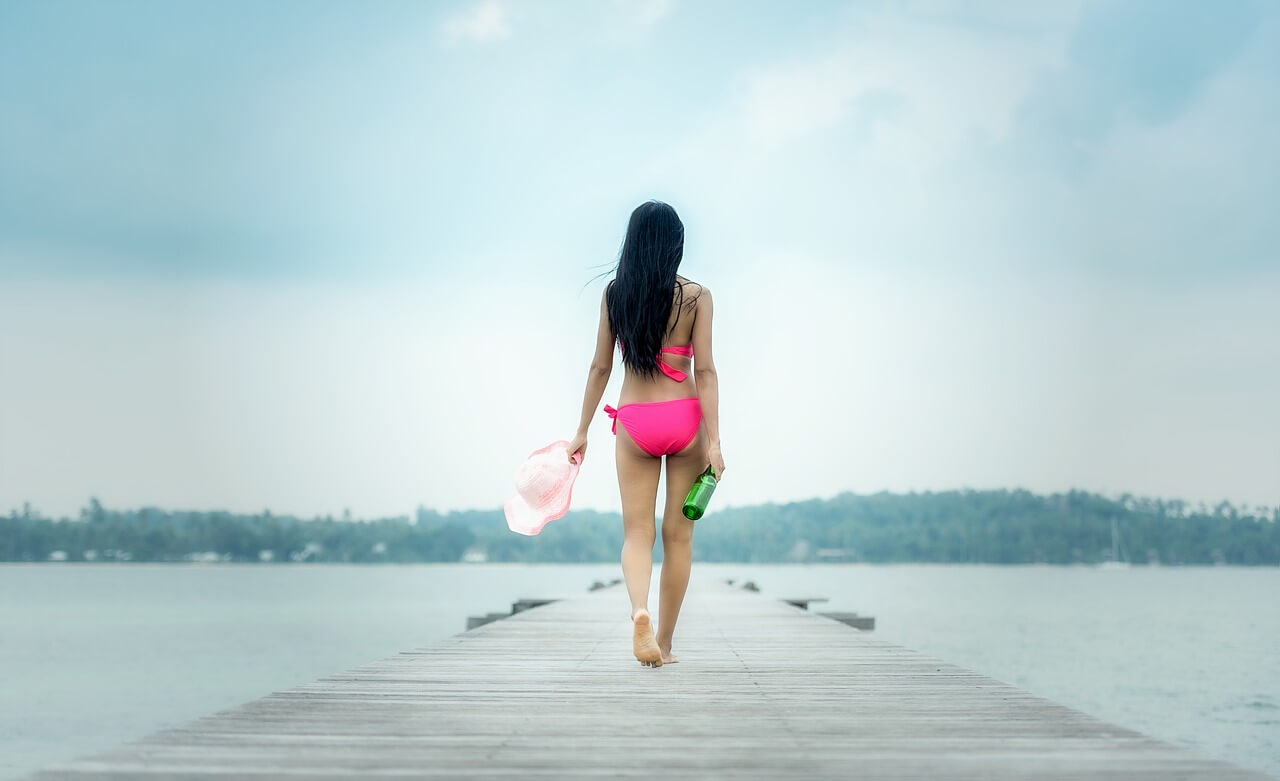
Pixabay
And the beach is open for public happily ever after
As Jutarnji List reported, the Drvenik case has a conclusion to an intriguing plot. Unhappy with Meštrović's behavior, Dalmatian locals went vigilantly and started writing bad reviews on Google, seeing the villa losing its value and tourists.
„Even though neither the building, nor its surroundings changed since the video was released, the unkindness of the owner was enough to move once-prestigious villa to the lowest grading Croatian places on Google“, says Jutarnji.
A couple of more lessons can be learned for a successful and enjoyable season from this tale.
For owners: present your offer fair in accordance with the law as transparency is the best way for your offer to beat the competition.
For tourists: if you were promised a private beach, but you see locals coming, don't be rude to them and don't attack them. The only one you can really be mad at is your host, who perhaps lied about what they can truly provide.
Learn more about beaches in Croatia on our TC page.
For more about travel in Croatia, follow TCN's dedicated page.
Final Segments of Peljesac Bridge Structure Coming Together
June the 12th, 2021 - The final segments of the long awaited Peljesac bridge structure are finally being put into place following their delivery on Tuesday. The Chinese vessel "Development Way" carrying the bridge's final segments experienced issues and was late arriving, but it seems that things are back on track.
As Morski writes, the large Chinese vessel "Development Way" delivered the last parts of the Peljesac bridge structure on Tuesday this week. So far, 1,800 metres of the future bridge which will unite not only Croatian territory but that of the European Union (EU) have been installed, which is 75 percent of the total length of the bridge, and the remaining 24 segments of the steel span structure of the bridge have arrived by ship.
Although the ship's arrival was scheduled for Monday, there was, as stated, a two-day delay for Development Way on its way to the southern Croatian Port of Ploce from China.
As such, the enormous project that the extreme south of Croatia has been dreaming of for years, in which the need to cross into and back out of Bosnia and Herzegovina (Neum), is removed, has taken another significant step closer to its realisation. The total value of the investment in the Peljesac bridge structure stands at a massive 526 million euros.
If work continues at this pace, the much talked about bridge could be completed by the end of the year, with the steel structure hopefully being installed during August.
There is still quite a bit of work to be done yet, including installations, drainage facilities, electrical installations, the bridge's lighting, equipment, fences, windbreaks, the repair of corrosion protection, the installation of waterproofing and of course the final asphalt layer.
The official opening of the Peljesac bridge is still scheduled for some time in March 2022.
For much more, make sure to follow our dedicated lifestyle section.
Elementary School in Vrpolje Damaged in 4.7 Magnitude Earthquake
ZAGREB, 8 June, 2021 - The 80-year-old elementary school in Vrpolje near the coastal city of Šibenik, which was the epicentre of a 4.7 magnitude earthquake that struck on Tuesday morning, was damaged, suffering cracked walls and part of the ceiling on the first floor caving in.
The school's deputy principal Stipe Komadina said that structural engineers were expected later today to determine the condition of the school.
About 60 children attend the elementary school in Vrpolje. Lessons will be held in the school today and all the children have been instructed of what to do in the event of an aftershock.
The earthquake measuring 4.7 on the Richter scale hit the Šibenik are at 5.59 a.m. on Tuesday. The epicentre was in the Vrpolje area, some 13 kilometres southeast of the city, the Croatian seismology service said.
The national railway operator Hrvatske Željeznice said that traffic between Knin and Split and between Knin and Šibenik was suspended pending completion of an inspection of the railway lines. Traffic resumed later in the morning after no damage was found.
For more about earthquake in Croatia, follow TCN's dedicated page.
4.7 Magnitude Earthquake in Šibenik Wakes Up Dalmatia
June 8, 2021 - A 4.7 magnitude earthquake in Šibenik was recorded this morning at 6 am and was felt around Dalmatia.
Tuesday morning at 5:59, the Seismological Service of the Republic of Croatia recorded a strong earthquake with an epicenter about 13 km southeast of Šibenik. The quake was felt from Senj to Dubrovnik, reports Index.hr.
The magnitude of the earthquake was 4.7 according to Richter, and the intensity in the epicenter of the VI degree of the EMS scale, writes the Seismological Service of the Republic of Croatia.
The European Mediterranean Seismological Center (EMSC) reported earlier that the quake was 4.8 on the Richter scale, and on Twitter users reported that it was short but very strong and woke them.
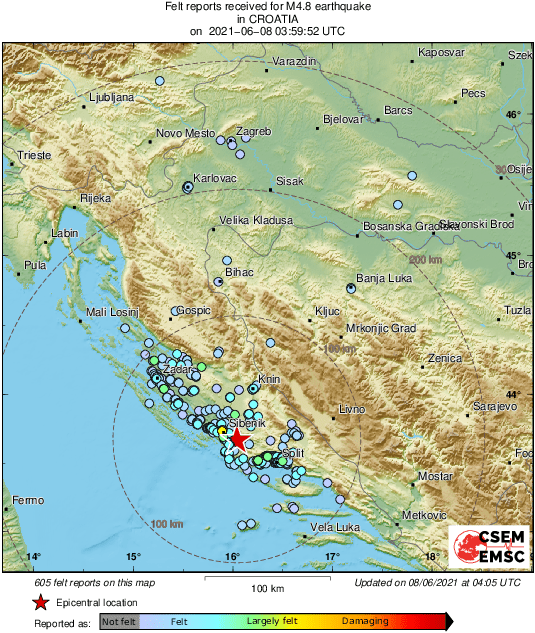
The quake was felt in the wider area of Zadar and Šibenik-Knin counties. Citizens from Brodarica and Primošten reported on the EMSC application that the tremor was strong and unpleasant.
Citizens also wrote on social networks that a stronger earthquake was felt, which lasted longer. No damage has been reported so far.
"We had a lot of calls. People call scared, asked us what happened, some thought it was an explosion due to a loud rumble, some are confused. In general, we have no reported significant damage, we have information that in Vrpolje, a piece of rock that broke off from the house hit a car, but no one was injured," the 112 Center told SibenikIN.
"This is a new epicenter compared to those who have been active so far. During the day and in the coming days, we can expect more weak earthquakes in the area," seismologist Mustać told N1.
Due to the inspection of the railway after this morning's earthquake in the Šibenik area, the railway sections Knin - Split and Knin - Šibenik were closed to traffic, the Croatian Railways (HŽ) announced on Tuesday morning.
To read more news in Croatia, follow TCN's dedicated page.
Old Painting Confirms Dalmatian Breed is Croatian Dog
May the 26th, 2021 - The beloved Dalmatian breed is popular all over the world, having been the star of famous films and regularly appearing as a fire house dog in the USA. Despite its name pointing directly to its place of origin, many still don't realise that Croatia's Dalmatian coast is the origin of this much loved dog breed. One Croatian vicar from Makarska believes he has substantial proof that the spotty, clownish and friendly Dalmatian truly did originate on these shores.
As Morski/HTV/Dnevnik/Ivica Djuzel writes, in beautiful little Zaostrog in Central Dalmatia, they decided to further brand their rich cultural heritage. In the monastery of St. Mary, where the great folk poet Andrija Kacic Miosic spent part of his creative life, hangs a painting with the motif of the last supper from the 18th century. On the floor lies a dog which closely resembles the Dalmatian breed as we know it today. To most, this is proof that the famous Dalmatian breed is definitely an autochthonous Croatian breed.
Various treasures have been kept in the monastery of St. Mary in Zaostrog for centuries, and the great Fr. Andrija Kacic Miosic also created works there. For a long time, these invaluable pictures were hidden away from the public and prying eyes. Then the media got involved in the saga.
''One night someone rings the bell. I come down, to find two young Japanese people saying they'd like to see a picture. I asked them if they wanted to see the whole convent. They replied that they were only interested in the picture,'' Fr. Branko Brnas, the vicar of the Franciscan monastery, begins when in conversation with HRT.
Inside hangs the aforementioned painting with the motif of the last supper from the 18th century, proof is that the famous Dalmatian breed is an autochthonous Croatian breed. Oddly enough, it took a long time to admit that.
The locals then decided to roll up their sleeves and reveal this priceless piece of cultural treasure to tourists and, in accordance with the possibilities, brand the whole place in black and white to resemble this four-legged, fetch-playing global ambassador of Dalmatia. They are aware of the wild popularity of the Dalmatian breed around the world, and they started this branding back last summer.
''We've now launched a year-round project called ''Dalmatian Dog Image In House Village’'. We're continuing with our ''Black and White'' event during the summer in accordance with the epidemiological situation and we want to open the visitor centre after this season,'' announced Bozena Delas.
Local authorities will apply for financial support from available European Union (EU) funds, and local artists and designers also joined in. The bus stops were painted to look like the Dalmatian breed's unusual coat first. The ''Dalmatinac'' (Croatian for Dalmatian) sign will be designed in cooperation with the Faculty of Graphic Arts in Zagreb. The director of the Gradac Tourist Board, Davor Andrijasevic, believes that the Dalmatian's ties to its place of origin are often wrongly forgotten about.
In the municipalities of Gradac and Zaostrog, where 800 thousand overnight stays are realised, they have their own vision of tourist development. The strange and often monotonous days of the pandemic-dominated era awakened some creativity. Now, the first guests have begun to return, with 20 percent better results are expected this summer than last year.
For more, follow Made in Croatia.
Highlights of the Week: 5 Big Events in Croatia from May 3-9, 2021
May 7, 2021 - TCN's regular retrospect of Highlights of the week, through the selection of TCN's reporter Ivor Kruljac.
President Milanović loved by locals in Plaški. Firefighters quickly reacted to the fire in Zagreb recycle yard. Pula celebrated its liberation while Šibenik received new doses of coronavirus vaccines. Dinamo and Hajduk end their match in a tie. Overall another interesting week in Croatia, and here are more details on all highlights.
Highlights of the week: President Milanović loved in Plaški county
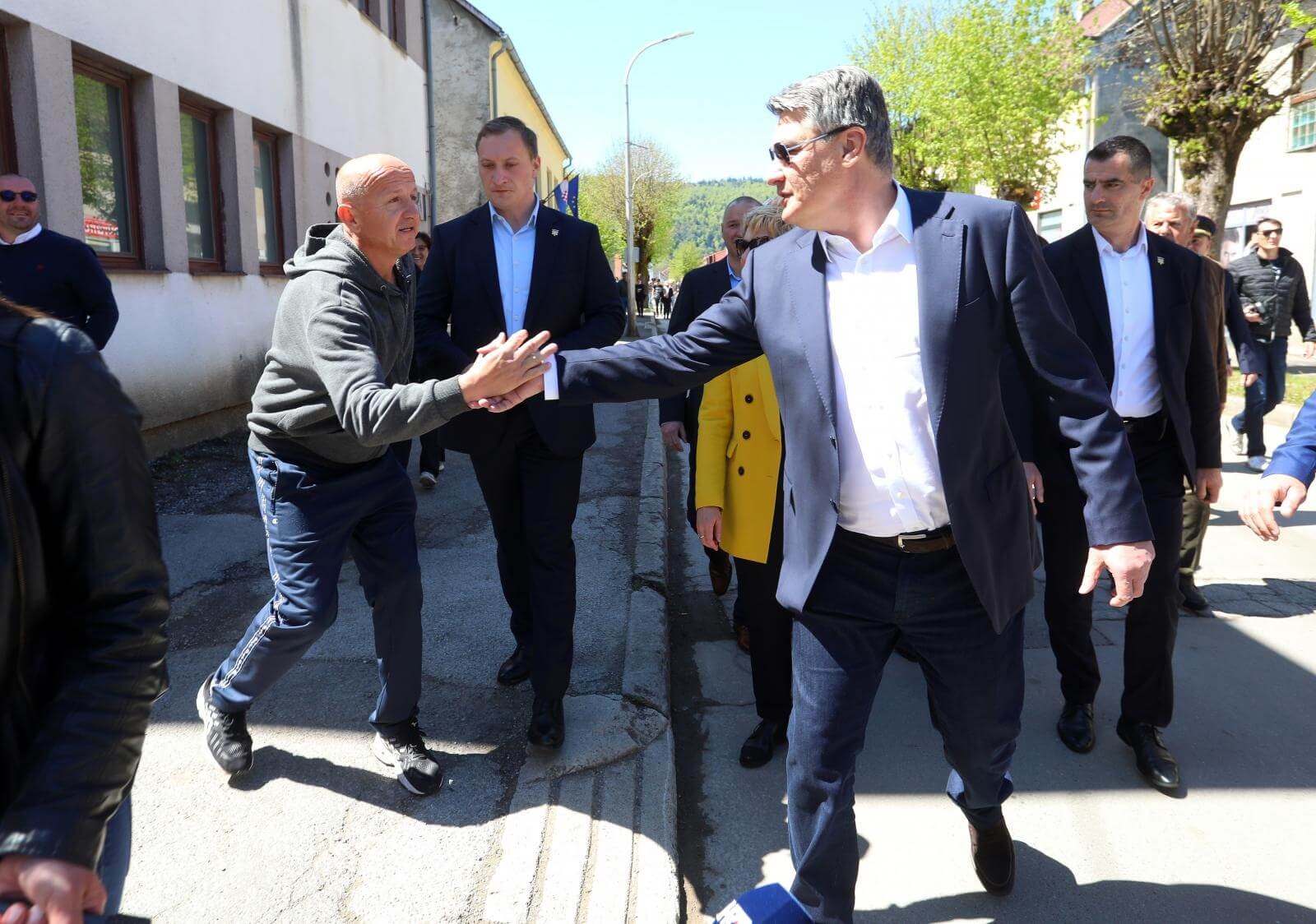
© Kristina Stedul Fabac/ PIXSELL
Croatian president Zoran Milanović visited Plaški county near Ogulin on Tuesday to visit the newly-build Firefighter's home and Plaški Culture Home. The locals welcomed president Milanović with ovations, and many use the opportunity to handshake and take a photo with the president. As Večernji List reports, Milanović took the visit as an opportunity to comment on the hate speech incident at Borovo Selo. He stated that the President of Serbian National Council Milorad Pupovac and Croatian Prime Minister „should use the police, but they don't, they are causing incidents.
Highlights of the Week: Pula celebrating its liberation in WW2
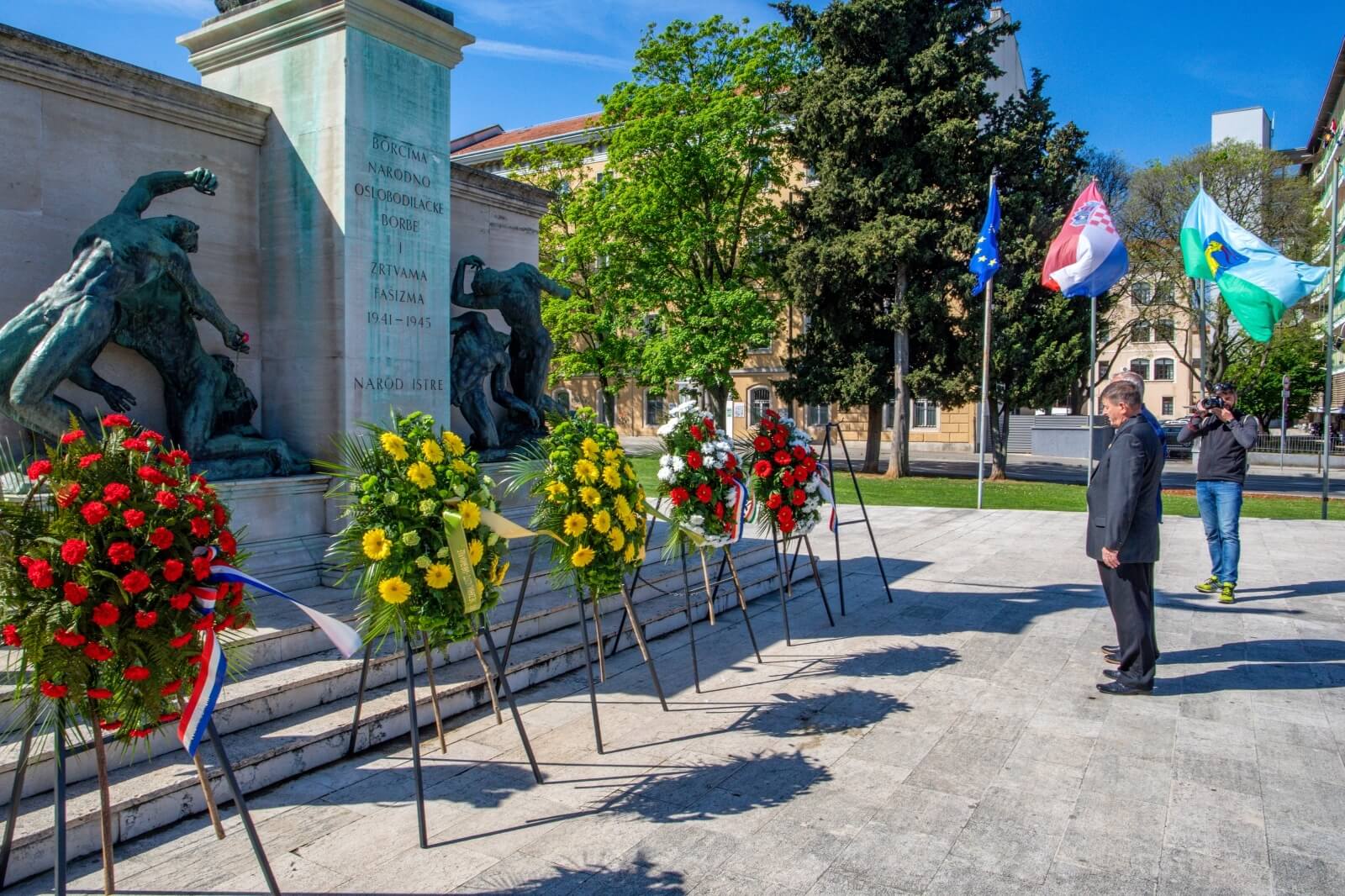
© Srecko Niketic/ PIXSELL
Pula celebrated its annual liberation day and the Pula City Day, marked on May 5. In Tito's park, the traditional commemoration to the fallen WW2 soldiers of Tito's partisan army saw Tiziano Sošić (president of Pula City Council), Elena Puh Belci (vice mayor of Pula), Aleksandar Matić (chief of the City of Pula Office) and Fabrizio Radin (vice-county ruler of Istria county) paid their respects. Representatives of associations of anti-fascist fighters and anti-fascist of the city of Pula were present too.
Highlights of the Week: Dinamo and Hajduk end with an even score 1:1
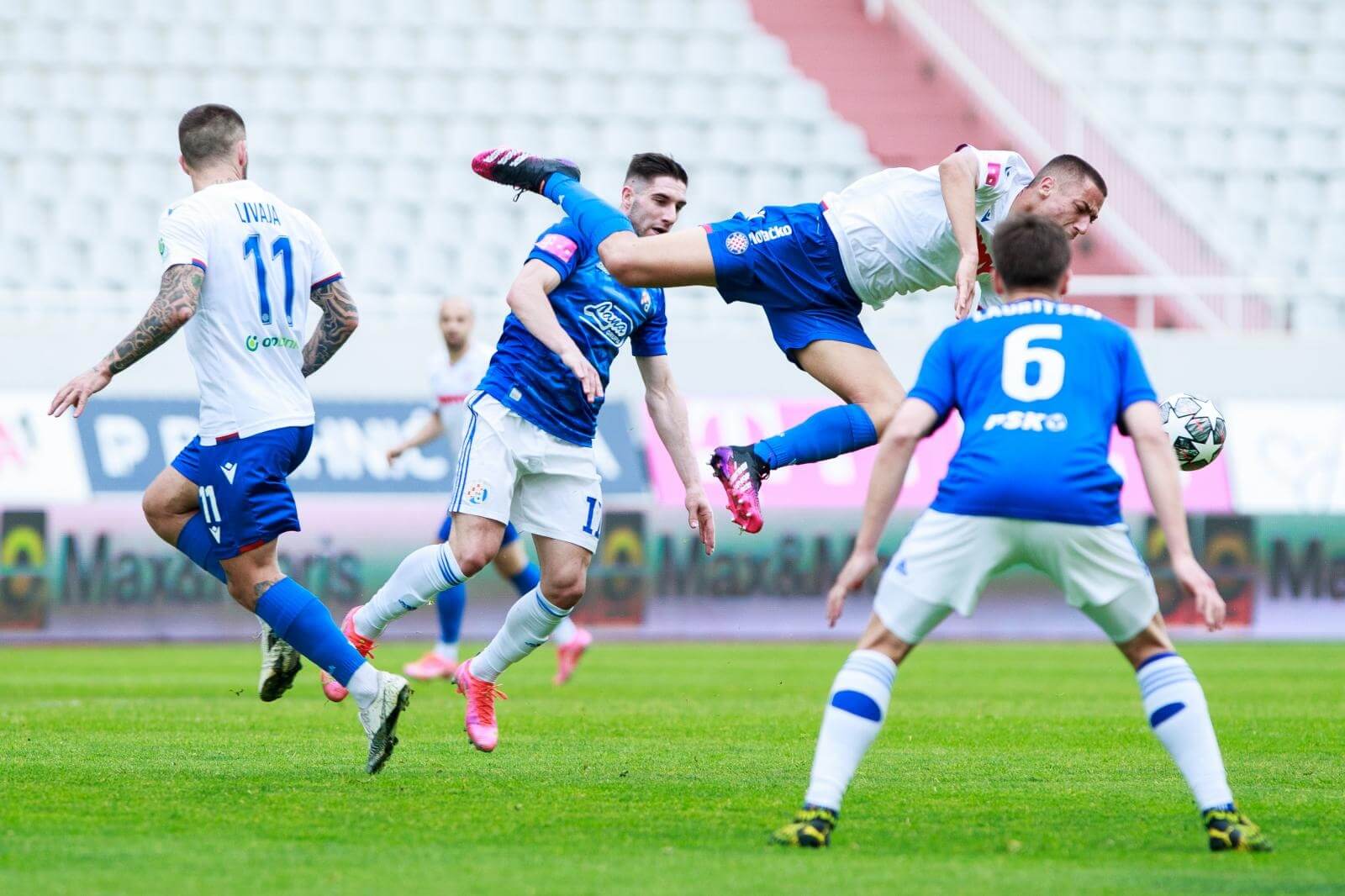
© Milan Sabic/ PIXSELL
Hajduk and Dinamo's eternal opponents played another game at Hajduk's home of Poljud Stadium in Split on Wednesday. The match was the 22nd round in Croatian First League, and fans couldn't wait for it as the game was postponed.
Hajduk opened the match well and had a chance to take the lead in the first 20 seconds. Kačaniklić received an excellent long ball and ran on the right side. He rushed into the penalty area and shot diagonally, but Livaković came out and closed his corner. Dinamo improved and took the lead in the 16th minute with a goal by Majer, and Livaja returned the favor in the 44th minute. Diamantakos hit the crossbar in the final minutes of the match but without success.
After three victories in the previous three clashes with Hajduk this season, Dinamo failed to achieve maximum performance and almost mathematically secured the title but entered the last four rounds with a seven-point advantage over Osijek. The fail happened despite Dinamo facing Hajduk with the strongest possible lineup.
Highlights of the Week: Vaccination in Šibenik continues successfully
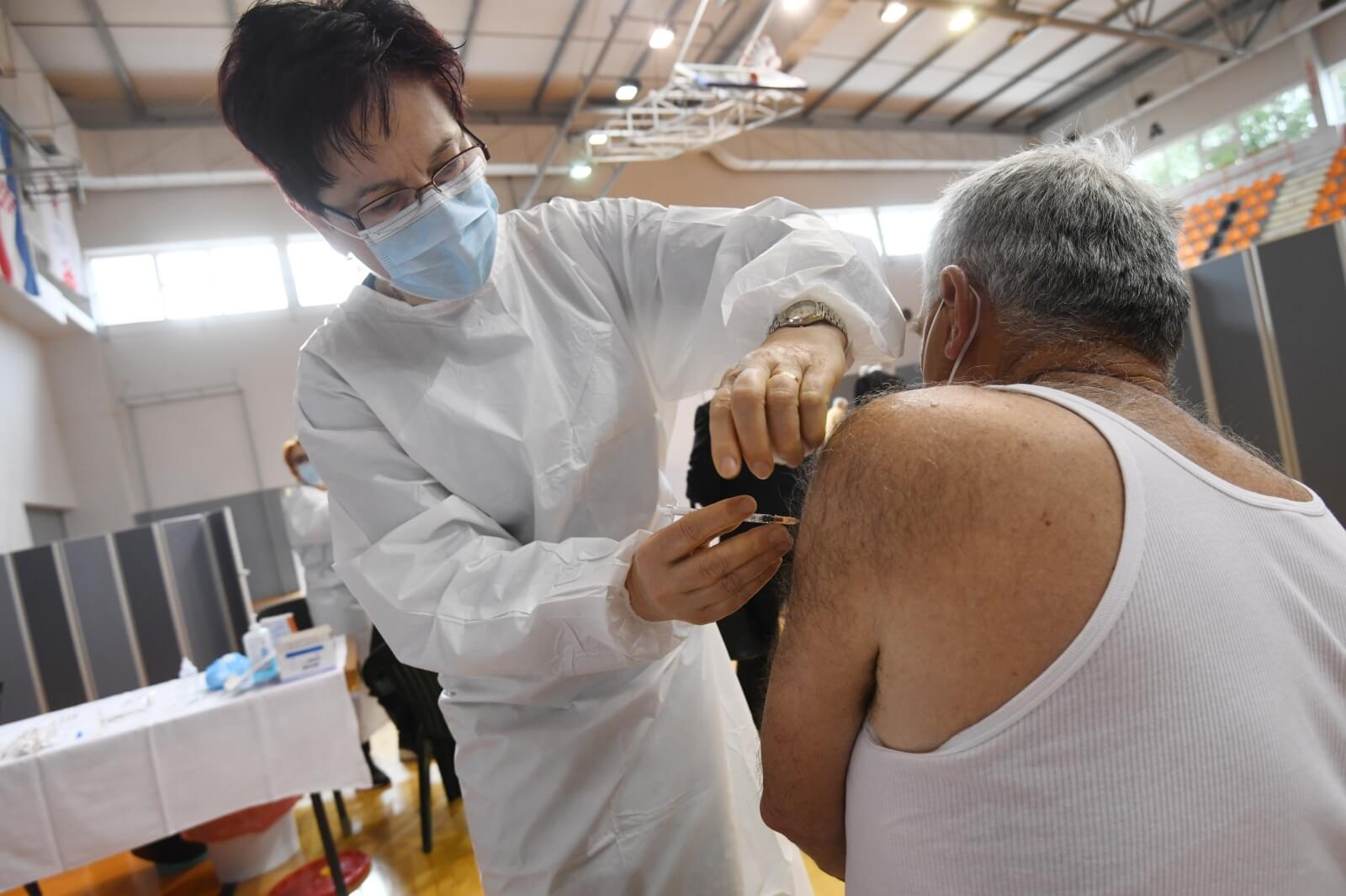
© Hrvoje Jelavic/ PIXSELL
Larger quantities of vaccines came to Šibenik on Friday, allowing vaccination in Baldeki Sports Hall to go without problems for the second day in the row. The vaccination attracts a number of citizens, so the area got quite crowded.
Highlights of the Week: Recycling yard in Zagreb on fire, reasons unclear
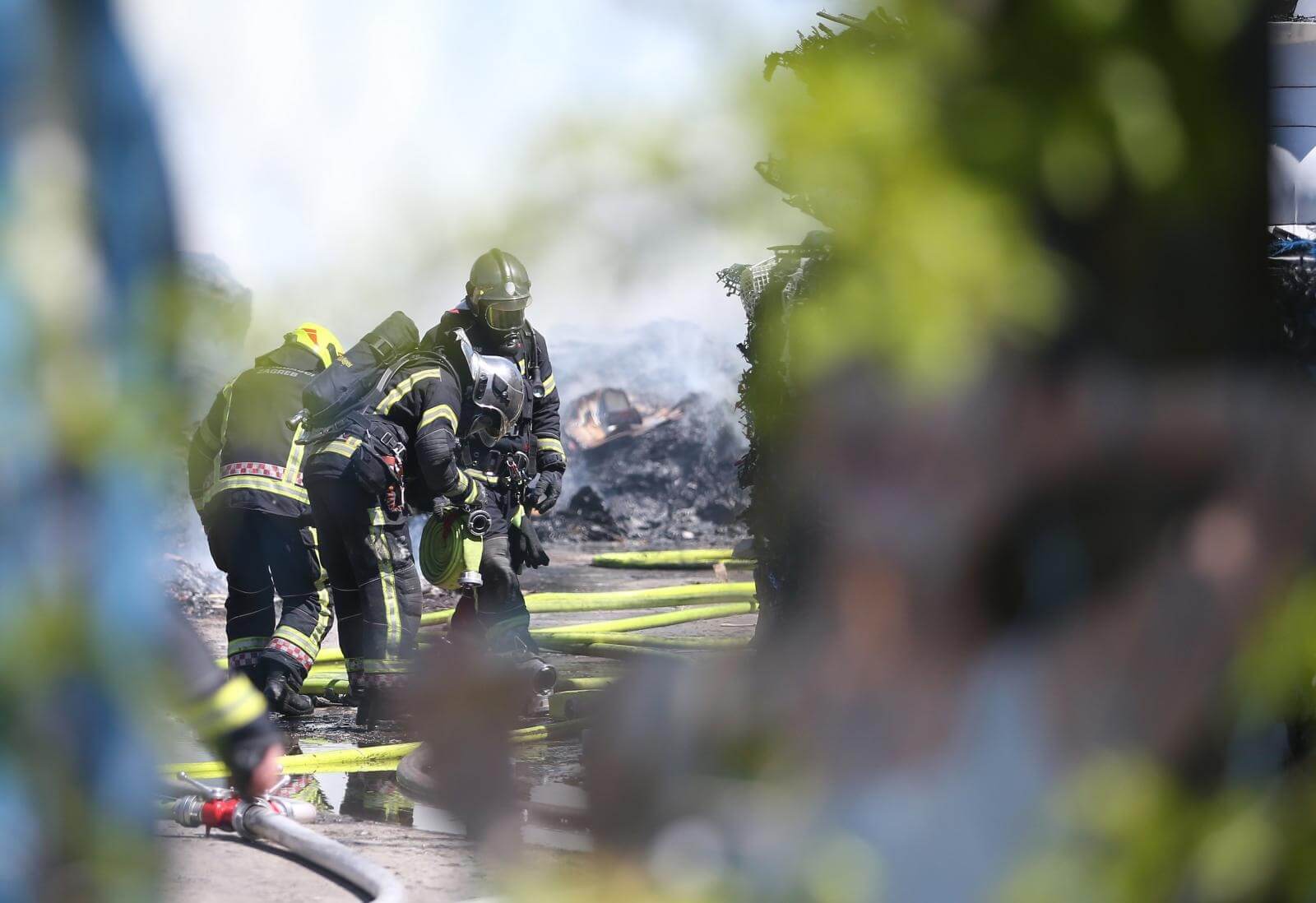
© Matija Habljak/ PIXSELL
Zagreb's recycling yard, located on Sarajevska Cesta in Novi Zagreb, was victimized by fire but quickly localized and put under control on Tuesday. The fire caught four containers, and 21 firefighters with six fire trucks rushed to the field. Police investigated the cause of the fire, but the reason is, for the moment, unknown. Firefighters managed to operate despite the lack of hydrants, and the thick white smoke was noticed by citizens who live in the buildings close to the yard, reported Večernji List.
To learn more about Croatia, have a look at our newly launched TC website.
For more about news in Croatia, follow TCN's dedicated page.
From Warsaw to Bisevo: Meet Beata and Her Amazing Life on the Adriatic
April 30, 2021 – TCN recently talked with Beata Przybyszewska Kujawa from Poland who moved from Warsaw to Bisevo island and started a new, significantly different life. As she says, the Adriatic impresses her and she is enjoying her new island life. She sees the greatest potential in eco tourism in Croatia, and her dream is to open a Biševo Museum. Here's her full story.
You believe that the Adriatic Sea and its coast had healing properties for you because you managed to solve some health problems you had by coming to the Adriatic. Other people have confirmed the same. What thrilled you the most in Dalmatia?
I first came to Dalmatia, more precisely to the island of Hvar, during a tour organised by the ORBIS travel agency back in 1980 – back in the times of the former Yugoslavia. I remember walking along the shore from the Sirena hotel towards Hvar Town. I saw the sunset illuminating the white stone houses, surrounded by palm trees and the calm, sparkling surface of the sea. I felt a rush of emotions coming over me, and, for the first time in my life, I started crying with delight.
From that moment on, I started travelling around Croatia very often, and it was Dalmatia, and especially the islands, that delighted me the most. I want to add that I have visited many countries across the world: the USA, Canada, Russia, Ukraine, Tunisia, Sweden, Denmark, Switzerland, France, Austria, Italy, Romania, Bulgaria, and Greece, but Dalmatia is my place on Earth, and here I feel the best. I consider the Adriatic Sea to be the most beautiful in the world, not only for its aesthetic beauty but also thanks to the health benefits it provides.
Mezuporat on Biševo
I have felt on my own skin many times that swimming in the Adriatic Sea is an irreplaceable therapy that strengthens my health and immunity. Thalassotherapy – sea therapy, hundreds of bioelements and minerals dissolved in the sea, the sun - a source of natural vitamin D3, clean air, the Mediterranean vegetation – all of these are indispensable factors necessary for our health.
Surprisingly, I 've noticed that the locals often don't take advantage of these benefits of nature and what they have at their daily disposal! They rarely swim in the sea. They consider it an activity meant for tourists who rent apartments and are essential for their household budgets.
Up to this day, I'm still delighted with the Dalmatian climate, the combination of flora and fauna, the sea, and the mountains. I'm captivated by the colurs and the clarity of the Adriatic Sea, all the indescribable scents, an aromatherapeutic cocktail of rosemary, lavender, Mediterranean pine, salt, and algae. All this is intertwined, giving a person what they need, but if only they want to take advantage of its benefits.
Gatula on Biševo
You're interested in spas and wellness, as well as in nature and plants. What do you consider to be the greatest natural treasure in the Adriatic Sea? What do you think, what do we have, and what else is needed for so-called wellness tourism?
In Poland, I'd been actively promoting a healthy lifestyle for over 25 years. I hold a Master's degree in public health and diplomas in the fields of cosmetology and health promotion. I had my own publishing house, which had been publishing the "Gabi. Net - Estetyka & Zdrowie" magazine for over ten years. I've organised over 180 congresses, training sessions and workshops on a healthy lifestyle, spas, and wellness. I was a consultant in this field for many hotels and wellness centres.
Here in Dalmatia, there's a massive potential in the area: there are hundreds of plants, herbs, natural substances, and ingredients that can be used in pro-health and anti-stress therapies in the SPA and Wellness industry: for massages, peelings, inhalation, baths. For seniors who have problems with their sleep, walking, or bad joints, business people who are often too stressed out, people who are obese and those recovering from various illnesses.
Mezuporat Bay on Biševo
Now, during the coronavirus pandemic that is doing damage to our respiratory system, we must pay attention to the body's oxygenation, proper, deep breathing, as well as room ventilation. Gymnastics, outdoor yoga, swimming, and the intentional use of the sun are very important in supporting our immune system.
Therefore, I see the greatest potential in so-called eco tourism – being among nature, with an active form of rest, immersed within nature and all of the gifts it provides.
Porat Bay on Biševo
You're also interested in culture and you think that there is excellent cultural potential in Dalmatia. What do you think, how would it be possible to develop it?
During my last six years in Warsaw, I worked as a culture inspector in the Mokotów district. I organised concerts, exhibitions, and other cultural events. I was also the president of the Polish-Croatian JADRAN Association. Among other things, we were focused on cultural contact between our countries. As such, we organised Croatian Culture Festivals in Warsaw, where we hosted musicians such as Parni Valjak, Goran Karan, Ana Rucner, and 'klapa' groups from the islands of Šolta and Brač. These events were exciting, promoting both Croatia's culture, art, and cuisine.
Dalmatia has excellent cultural potential. Its unique, ubiquitous music and ancient architectural heritage are the elements that, in my opinion, create its strongest points. International music meetings and making music together would be an exciting idea.
For example, during one of the Croatian Festivals, two female music groups joined together: the Polish band Służewianki and the Croatian 'klapa' group Čuvite from the island of Šolta. These ladies sang the song "Mariana," together, which is well known both in Poland and in Croatia. It's similar in the realm of poetry. I think organising international poetry meetings would make for a great experience.
For example, on the island of Šolta, in Nečujam, where Krzysztof Kamil Baczyński, one of the greatest Polish poets, stayed twice during the summers of 1937 and 1938, it turned out he stayed in the very same house in which the great father of Croatian literature, Marko Marulić, wrote the poem "Judita." This beautiful stone house is still standing there, begging for renovation. On its facade hangs a plaque dedicated to Marulić, and in front of the house, there is a plaque made of white marble in honour of Krzysztof Kamil Baczyński.
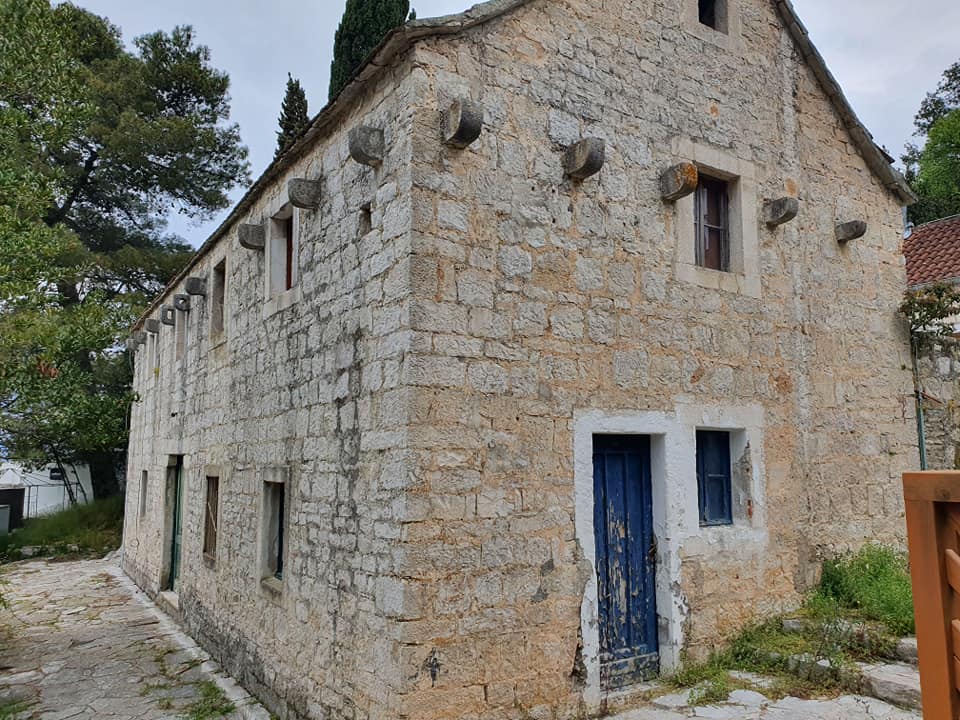
The Marko Marulić residence in Nečujam on Šolta, pictured on April 26, 2021 by Damir Jerčić, taken from the Naš Nečujam Facebook group
In the nearby church of St. Teresa, in Rogač, there is also an impressive plaque in honour of Marshal Józef Piłsudski, who in the 1930s was a model and great authority in many countries. Piłsudski also visited the Dalmatian coast, and also went to Opatija.
It would be great to establish memorial rooms for both of those great poets in this extraordinary house in Nečujam on Šolta and to organise regular poetry meetings. Another reason for that is that the great Croatian poet, Vesna Parun, also used to stay and now rests on the island of Šolta.
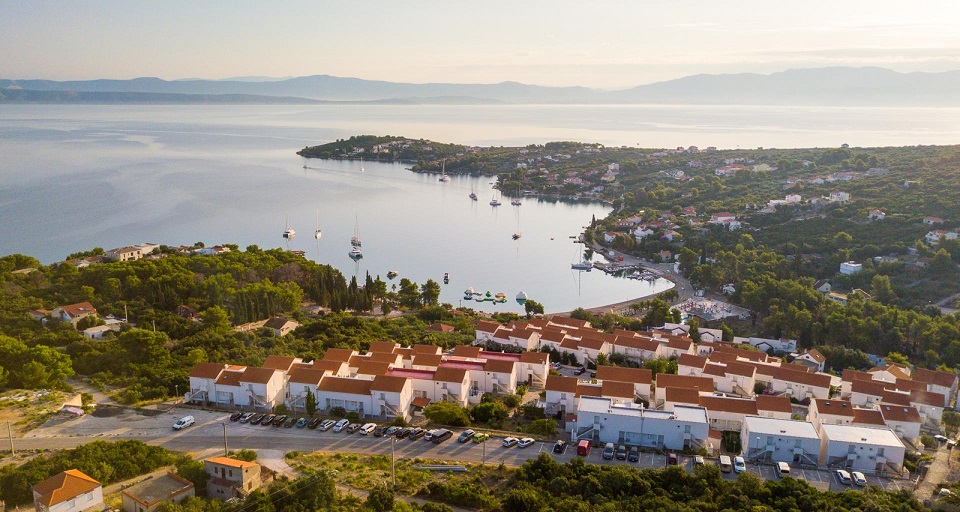
Nečujam on Šolta / Šolta Tourist Board
As you said, your greatest wish is to open a museum of "everything that was thrown out by the Adriatic Sea" in Biševo. What would be the theme of the museum? When can we expect this project to be realised? Are you already taking any steps?
My first artistic venture on the island of Biševo, where I've been staying since January this year, was painting stone Easter eggs, called 'pisanki' in Poland. I decorated a dozen of them and gave them to the island's inhabitants, along with my warmest Easter greetings. That was a way for me to meet and introduce myself to them.
Around a dozen people are living here permanently. In summer, more people come from the neighbouring island of Vis, not to mention the thousands of tourists who visit Biševo mainly to see the exceptional Blue Cave.
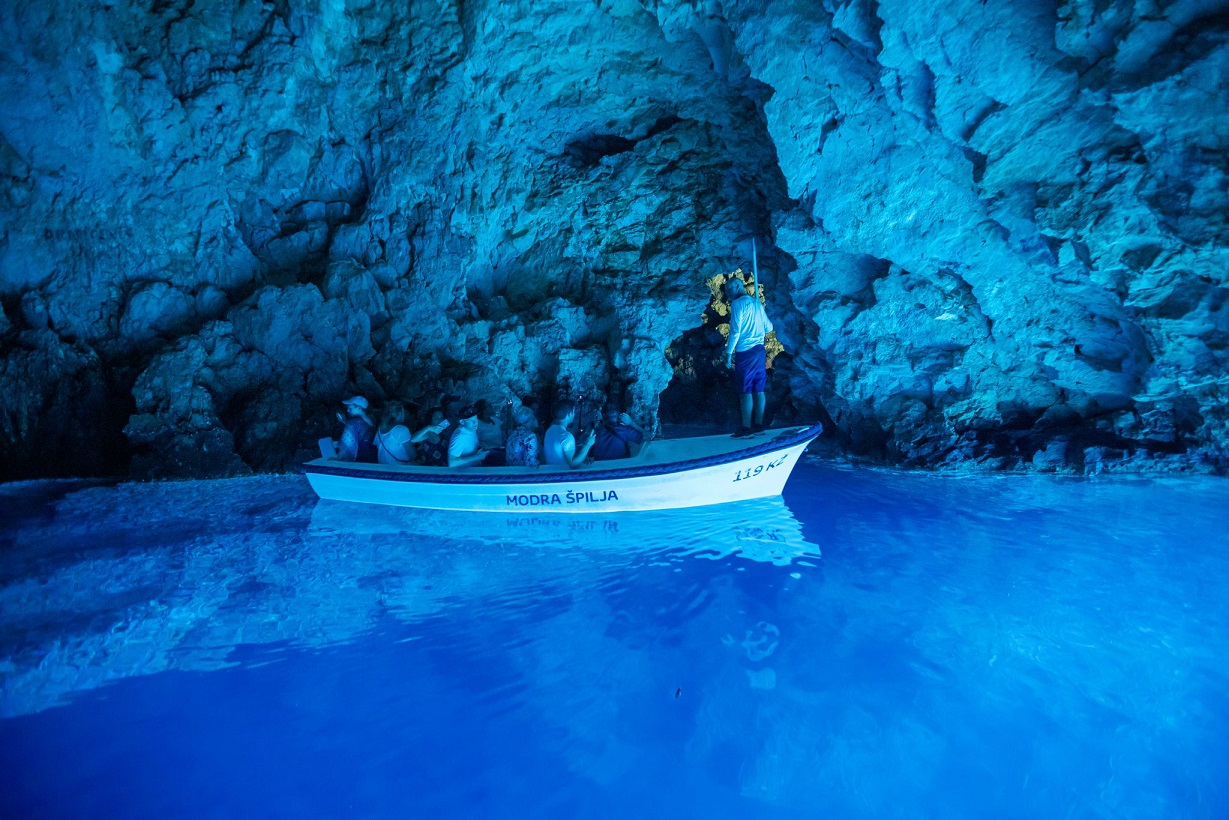
Blue Cave on Biševo / Romulić and Stojčić
As part of the 'Kamen i Krš' project, a former school is being expanded and rebuilt as a tourist facility with a restaurant and cultural attractions meant for visitors of the Blue Cave. There are more tourist attractions in preparation – the "Bear Cave" and also a system of underground tunnels from World War II, which may serve as a space for the organisation of, for example, natural or historical exhibitions.
Tunnels from World War II on Biševo
Before Easter, in the tiny, unusual, ascetic church of St. Sylvester from the 11th century, I made the installation of Christ's tomb from stones and linen that I found on the beach. Also, a crown of thorns was made of the roots and plants brought by the sea. Locals joined me in these activities, and we shared a beautiful holiday, both in the spiritual and "bodily" sphere, preparing Easter treats from both Croatian and Polish cuisine together.
Church of St. Sylvester from the 11th century
I love to paint, draw, create compositions from stones, plants, grass, and plant fibers. I often go to the nearby beach and collect what the sea brings me: pieces of glass, pieces of wood "polished" with the sea salt, interestingly shaped stones, shells, and cones. I then create various compositions from them; I just need to get the suitable glue and other necessary materials.
An installation that Beata made of stone for Easter in the church of St. Sylvester on Biševo
I dream of creating the Biševo Museum in the future, where old objects and photos of life on the island and its inhabitants would be displayed, as well as artistic compositions made of materials that were thrown out by the sea. However, we'll need a suitable space for that, which is the hardest thing to find.
Describe your island life on Biševo without the water and the crowds, unlike your life in a big city like Warsaw?
In Warsaw, I lived very intensely and actively for more than 12 years. I had my own company, a husband, two sons, social activities, and that used to occupy almost all of my time, not leaving much free time just for myself. There has always been a longing for nature inside me, a desire to immerse myself in nature and live surrounded by it, away from all the hustle and bustle, all the rush and polluted air.
From that came my love of travelling and this long-dormant dream of living in Dalmatia. Now this dream is coming true because my sons are grown up, and after my husband's death, I found a partner who comes from the tiny island of Biševo.
I'm living a simple life here, being at one with nature and the magnificent Mediterranean landscape that changes every day. In the morning, I open the window, listen to the cries of the seagulls and watch the shimmering colours: from azure – blue – to dark navy blue – the most beautiful sea in the world – the Adriatic Sea; huge palm trees and aloe trees, and carpets of colorful flowers.
Then we catch fish, grow herbs and flowers, we make jam from oranges, mandarins, aloe flowers, dry citrus peels, and herbs from which we also make teas, liqueurs, and tinctures, and we pickle fennel and capers. My partner Mladen is a great cook, so the daily kitchen activities are not too tiring.
Beata and her partner Mladen fishing on Biševo
We're currently renovating the house and widening our garden, so there's a lot to do. The lack of running water on the island means that it is necessary to conserve it and use almost every drop we collect. The so-called 'guštirnie,' water tanks collecting the rainwater are an obvious necessity here, so each house has at least one of them.
In crises, when drought robs the island of rain, a ship that supplies water comes here so that we can buy it. Gardening is currently one of the biggest challenges for me. We have planted some vegetables, fruits, herbs, and flowers, and, despite the water restrictions and strong winds that often blow on the island, we hope we will able to harvest all we have planted.
Porat Bay on Biševo island
You've gathered together 68,000 Poles in love with Croatia in one Facebook group. What's the name of the group? When did you start it, and for what purpose?
My private Facebook group called 'Chorwacja,' which I founded almost nine years ago, already has around 68,000 members, which confirms how very popular Croatia is among Poles, one of the top nationalities most frequently visiting Croatia. It has been said that last year the whole tourist season was saved thanks to the Polish tourists arriving in great numbers, despite the pandemic.
However, I noticed that even though so many tourists come from Poland to Croatia, there's still a lack of information available in Polish – in restaurants, cultural facilities, and guides. This gap should be filled as soon as possible. I founded the Facebook group to allow people to exchange experiences related to this country, discover exciting places, and promote Croatia's culture, history, and customs.
To read more about lifestyle in Croatia, follow TCN's dedicated page.
President Zoran Milanović: "I'm Considering Not Having Army Attend Operation Flash Commemoration"
ZAGREB, 27 April, 2021 - President Zoran Milanović said on Tuesday that he was considering not having the army participate in the coming commemoration of the 1995 military and police operation "Flash" in Okučani, to protect it from politicking, and that he would discuss the matter with Defence Minister Mario Banožić.
"A situation where soldiers have to stand for hours while politicians and government officials successively lay wreaths to comply with epidemiological measures puts in an awkward position the Army Chief of Staff as well as the commander of the land army who, if they do not want to offend anyone, have to be on duty... after arriving with me, they have to wait for (PM Andrej) Plenković, then, I guess, also for (Parliament Speaker Gordan) Jandroković," said Milanović, who is the Supreme Commander of the Armed Forces.
"So I'm thinking about telling them to stay home, to simply protect them from any politicking... I will talk with the minister," said Milanović while visiting the Gašinci military grounds.
Milanović said that he did not see anything contentious about the fact that on Monday, at a reception he gave for retired officers and wartime commanders of the Croatian Defence Force (HVO) of Bosnia and Herzegovina, he also met with retired HVO general Tihomir Blaškić, who was in the HVO delegation.
Blaškić was convicted by the International Criminal Tribunal for the Former Yugoslavia (ICTY) and served a nine-year prison sentence for the cruel and inhumane treatment of Bosniak civilians and POWs from 1992 to 1994.
"Had Blaškić been responsible for something that, let's say Ratko Mladić was responsible for, I would not have received him," he said.
He announced that he would also receive General Milivoj Petković when he is released from prison "because he isn't a war criminal."
The convictions against Blaškić and Petković were political convictions, he added.
The ICTY convicted Petković of crimes committed in 1993 against Bosniaks in the territory that was under the control of the Croat authorities of Herceg-Bosna
Asked if he would attend a ceremony marking the anniversary of the establishment of the 4th Guards Brigade in Split, Milanović said that he would attend the ceremony in Knin.
"I'm going to Knin, not Split, that brigade is in Knin and the army will conduct such events in barracks," the president said.
For more about politics in Croatia, follow TCN's dedicated page.
Historic Day: First April Snow Cover in Split Ever Recorded (PHOTOS)
April 7, 2021 - The first April snow cover in Split was recorded on Tuesday night as weird spring weather ripped across Croatia.
It was a historic meteorological evening in Split on April 6, 2021. In the coldest moment of the evening, the temperature at the official DHMZ station, located on Marjan, measured 0.4 ° C (rounded to 0 ° C). This is only a tenth of a degree higher than the absolute minimum for April measured on April 8, 2003.
Snow fell all over the city, but higher city areas were covered, especially in neighborhoods like Visoka and Mejaši.
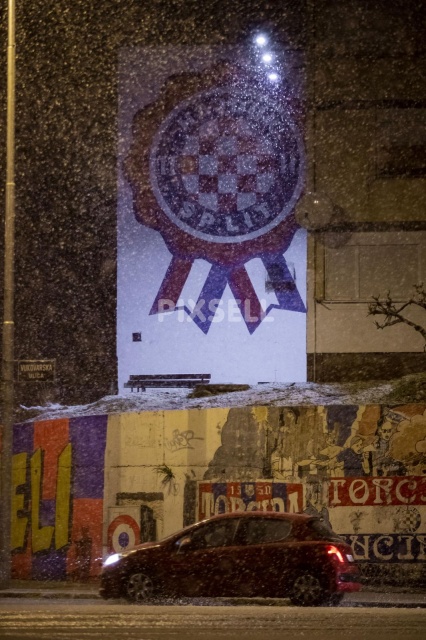
Miroslav Lelas / PIXSELL
The peak of the ice wave hit Dalmatia last night at around 9 pm. Snow fell on the entire Split area, including Kaštela. In Inland Dalmatia and Dugopolje, the snowfall was up to 20 centimeters!
In Kaštel Gomilica, there was a real snowstorm with hurricane gusts of bura wind up to 120 km / h. Snow also fell along the coast in Vodice, Šibenik, and Brela, reports Dalmacija Danas.
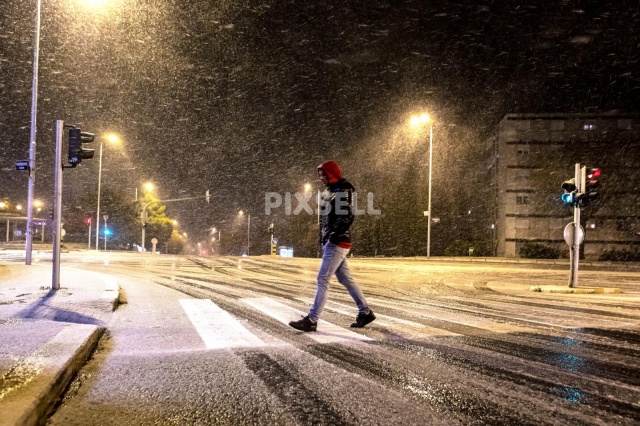
Miroslav Lelas / PIXSELL
Due to strong gusts of wind on the Dinara, the cold was as high as -24 degrees. As the snow fell, the temperature dropped to 0, which is also one of the record low temperatures for Dalmatia at this time of year.
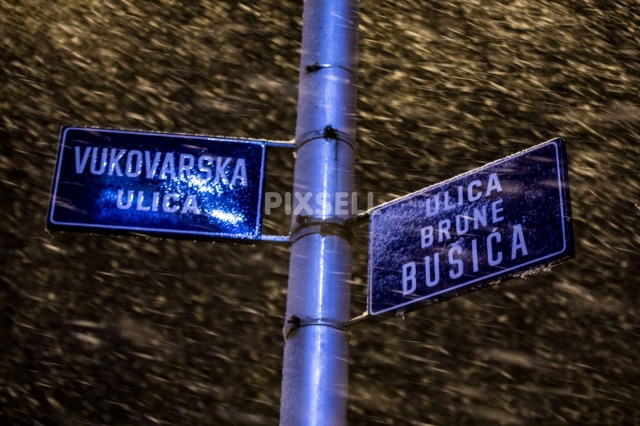
Miroslav Lelas / PIXSELL
Southern Croatia does not remember when the last snow fell in April.
And although it was only a symbolic snow cover, it is the first known snow cover in Split in April in known history, reports Dalmacija Danas.
Until this morning, Dalmatia was cut off from the rest of Croatia. Last night from 10 pm, all traffic from the interior to Dalmatia and vice versa for all categories of vehicles was prohibited, and only this morning at 6 am did traffic open, however only for personal vehicles to the junction Sveti Rok and then state roads through Gračac, Obrovac, and Karin.
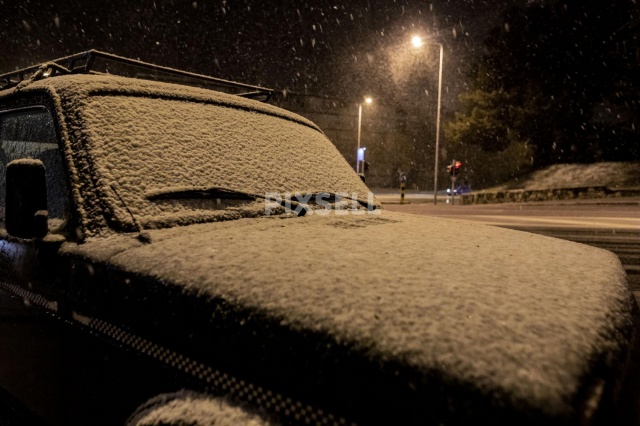
Miroslav Lelas / PIXSELL
There is still no passable road to Dalmatia for delivery vehicles, buses, trucks, trucks with trailers, and tractors with semi-trailers, and HAK warns drivers not to drive if they do not have to.
While we wake up to sunny skies on Wednesday morning, at least those of us in Split can say that we experienced a historic meteorological night!
For more about lifestyle in Croatia, follow TCN's dedicated page.
Zadar: Contracts For Social Entrepreneurship Worth HRK 10 Million Presented
ZAGREB, 12 March, 2021 - Labour Minister Josip Aladrović and deputy director of the National Foundation for Civil Society Development Luka Bogdan presented eight contracts in Zadar on Friday worth nearly HRK 10 million for projects to strengthen the capacities of old and new social enterprises and entrepreneurs.
"Today, we signed contracts with entities that are just starting and that are developing their business in accordance with principles of social entrepreneurship," said Labour, Pension System, Family and Social Policy Minister Josip Aladrović, noting that the ministry has provided over HRK 112 million to encourage social entrepreneurship.
The pandemic and crisis have created an opportunity for doing some things better and fairer, he said.
I believe that we can find a way in our business to regain a positive social impact. There are four counties among the co-signers: Zadar, Šibenik-Knin, Split-Dalmatia and Lika-Senj counties. All forms of entrepreneurship in these areas are more important than ever before, mostly due to the impact the pandemic has had on the tourism sector and all related activities, Minister Aladrović said, adding that by signing the projects they want to strengthen the capacities of old and new social enterprises through additional employment and education.
Deputy director of the National Foundation for Civil Society Development Luka Bogdan said that social entrepreneurship was one of the models connecting solidarity and entrepreneurship that could be seen every day, not just in a crisis.
The purpose of the projects is to employ members of vulnerable groups -- women, Croatian war veterans and victims of the Homeland War, people with disabilities and others, and this will include creating new jobs and improving the knowledge and skills of employees through specialised forms of training and employment.
Before presenting the contracts cofinanced by the European Social Fund, Minister Aladrović and his associates had a working meeting with representatives of the City of Zadar on increasing capacities of retirement homes.
According to state secretary Marija Pletikosa, it is estimated that about 5% of the population aged over 65 needs accommodation in a retirement home, and Zadar has not yet reached the capacity to accommodate 3%, so it is necessary to build new retirement homes.
Aladrović said that he supported the idea because increasing the number of accommodation units for the elderly population across Croatia was one the priorities of his ministry.
For more about business in Croatia, follow TCN's dedicated page.


